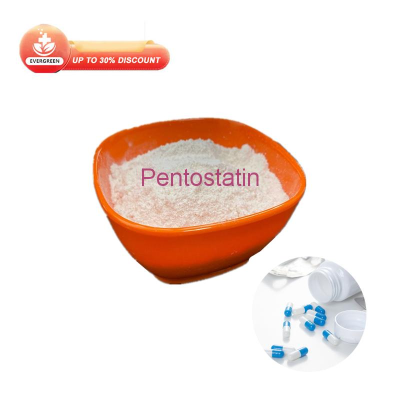-
Categories
-
Pharmaceutical Intermediates
-
Active Pharmaceutical Ingredients
-
Food Additives
- Industrial Coatings
- Agrochemicals
- Dyes and Pigments
- Surfactant
- Flavors and Fragrances
- Chemical Reagents
- Catalyst and Auxiliary
- Natural Products
- Inorganic Chemistry
-
Organic Chemistry
-
Biochemical Engineering
- Analytical Chemistry
- Cosmetic Ingredient
-
Pharmaceutical Intermediates
Promotion
ECHEMI Mall
Wholesale
Weekly Price
Exhibition
News
-
Trade Service
As the world’s most populous country, cancer has now become one of the high-risk diseases in China.
The number of new cancers in China far exceeds that of other countries in the world, and the number of cancer deaths ranks first in the world.
Therefore, effective treatment of tumors is getting more and more attention.
.
One of the reasons why tumors are difficult to treat is that there are a large number of hypoxic areas in the tumor.
Hypoxia can cause tumor cell genome instability, making conventional tumor treatment methods such as radiotherapy and chemotherapy poorly effective.
In recent years, the emerging photodynamic therapy has shown good clinical prospects in the field of tumor treatment, but its treatment process requires the participation of oxygen.
The hypoxic tumor microenvironment also limits the further development of photodynamic therapy.
Therefore, how to control and relieve hypoxia in tumor tissues is a research field that needs to be focused on in tumor treatment.
Nanomaterials have been used in cancer treatment for decades.
Nanomedicine exhibits excellent performance.
Its shape, size and functionalization can be adjusted with different tumor characteristics, so that it can be adapted to different treatment requirements.
Intelligent and functional nano-medicine can effectively alleviate the hypoxia of tumors and improve the curative effect of tumors, which has attracted more and more attention from researchers.
In recent years, people have proposed various strategies to deal with tumor hypoxia and enhance the efficacy of tumor treatment.
Macromolecular Bioscience recently published a review article "Strategies of Alleviating Tumor Hypoxia and Enhancing Tumor Therapeutic Effect by Macromolecular Nanomaterials" (https://doi.
org/10.
1002/mabi.
202100092) written by the research group of Professor Yong Hu from Nanjing University.
This review article introduced the impact of tumor hypoxia on tumor treatment and the use of different nano-medicines to deal with tumor hypoxia and various tumor treatment strategies.
In this review, the author summarized the strategy of using perfluoride (PFC), hemoglobin (Hb) and other nanomaterials to directly transport exogenous O2 to the inside of the tumor; using nanomedicine to generate oxygen in situ inside the tumor Strategies, the use of nanomedicine includes transporting catalase into the tumor, catalyzing excess hydrogen peroxide in the tumor to produce oxygen, or transporting oxygen-containing compounds (CaO2, CuO, Au2O3, H2O2, etc.
) to the tumor, decomposing it to produce oxygen Use nanomedicine to inhibit tumor cell respiration and reduce oxygen consumption to relieve hypoxia; prepare hypoxia-sensitive nanomedicine, use tumor hypoxia as a means of targeting tumors, and transport drugs into tumors.
The above-mentioned research work was funded by the National Natural Science Foundation of China (51973091:51773089), the Natural Science Foundation of Jiangsu Province (BK20181204) and other projects.
WILEY paper information: Strategies of Alleviating Tumor Hypoxia and Enhancing Tumor Therapeutic Effect by Macromolecular NanomaterialsZhenyu Jin,Qingyu Zhao,Shanmei Yuan,Wei Jiang,Yong HuMacromolecular Bioscience DOI:org/10.
1002/mabi.
202100092 click on the lower left corner "Read the original text" to view the paper original.
About Macromolecular Bioscience Journal "Macromolecular Bioscience" involves the fields of regenerative medicine, tissue engineering, drug delivery and biomedicine.
It is an advanced journal in the interdisciplinary field of polymers, materials science and biomedicine.
Press and hold the QR code on the official WeChat platform of AdvancedScienceNewsWiley's scientific research information.
Follow us to share cutting-edge information|Focus on scientific research trends to publish scientific research news or apply for information sharing, please contact: ASNChina@Wiley.
com







